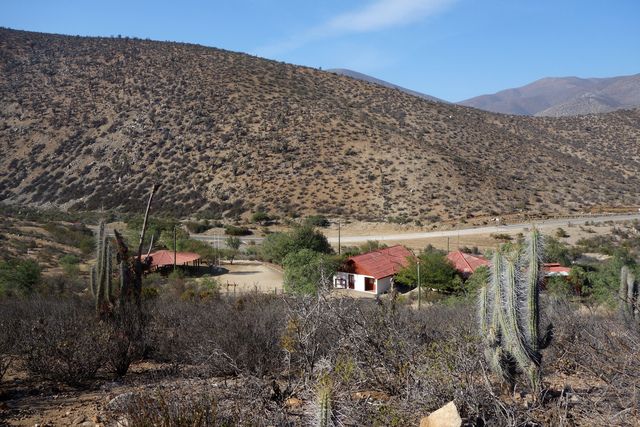Almostperfect10
Well-known member
Hola! I have just returned from Chile, and while I was there I had the opportunity to spend one night at the Reserva Nacional Las Chinchillas. This reserve is one of just two places that wild chinchillas can still be found. Unfortunately, I didn't see any wild chinchillas in the wild while I was there, but it was really neat to see the environment in which our chins live naturally.
I know I had a hard time finding information about the reserve while I was researching it, so I wanted to share my experience here. In order to stay at the reserve, you must make a reservation with CONAF, the national park service. You can find their contact information at the park's website. If your like me and your Spanish isn't very good, bring a copy of your reservation email to show the ranger; this will save a lot of confusion. I believe that you can camp there, but we chose to stay in one of the two cabins there. The cabins rent for $6000 (about $10 US) per person, and each cabin sleeps six, four in bunk beds and two in a double bed. The is pretty rustic, but has a full kitchen and bathroom with hot water (make sure the ranger turns on the water heater for you). Sheets and warm blankets are provided, but you must bring your own towel.
The reserve is 3-4 hours away from Santiago. Head north on the Panamerican highway until you reach Los Vilos. Roads in Chile are in great shape and driving is easy. Be prepared to stop at several tollbooths. Once you get to Los Vilos, you head northwest into the mountains. It is a gorgeous drive.

Once you get to Illapel, you have about 15 km to go. Illapel is a real town with grocery stores and restaurants, so you can either pick up food to cook in your cabin or go out to dinner here (you get a key to the reserve so you can come and go as you please after hours). This is also the last place your cell phone will have service.

Once you get a few miles out of town, you start to see these and get very excited!

When you get there.

More signs.

I know I had a hard time finding information about the reserve while I was researching it, so I wanted to share my experience here. In order to stay at the reserve, you must make a reservation with CONAF, the national park service. You can find their contact information at the park's website. If your like me and your Spanish isn't very good, bring a copy of your reservation email to show the ranger; this will save a lot of confusion. I believe that you can camp there, but we chose to stay in one of the two cabins there. The cabins rent for $6000 (about $10 US) per person, and each cabin sleeps six, four in bunk beds and two in a double bed. The is pretty rustic, but has a full kitchen and bathroom with hot water (make sure the ranger turns on the water heater for you). Sheets and warm blankets are provided, but you must bring your own towel.
The reserve is 3-4 hours away from Santiago. Head north on the Panamerican highway until you reach Los Vilos. Roads in Chile are in great shape and driving is easy. Be prepared to stop at several tollbooths. Once you get to Los Vilos, you head northwest into the mountains. It is a gorgeous drive.

Once you get to Illapel, you have about 15 km to go. Illapel is a real town with grocery stores and restaurants, so you can either pick up food to cook in your cabin or go out to dinner here (you get a key to the reserve so you can come and go as you please after hours). This is also the last place your cell phone will have service.

Once you get a few miles out of town, you start to see these and get very excited!

When you get there.

More signs.









































































